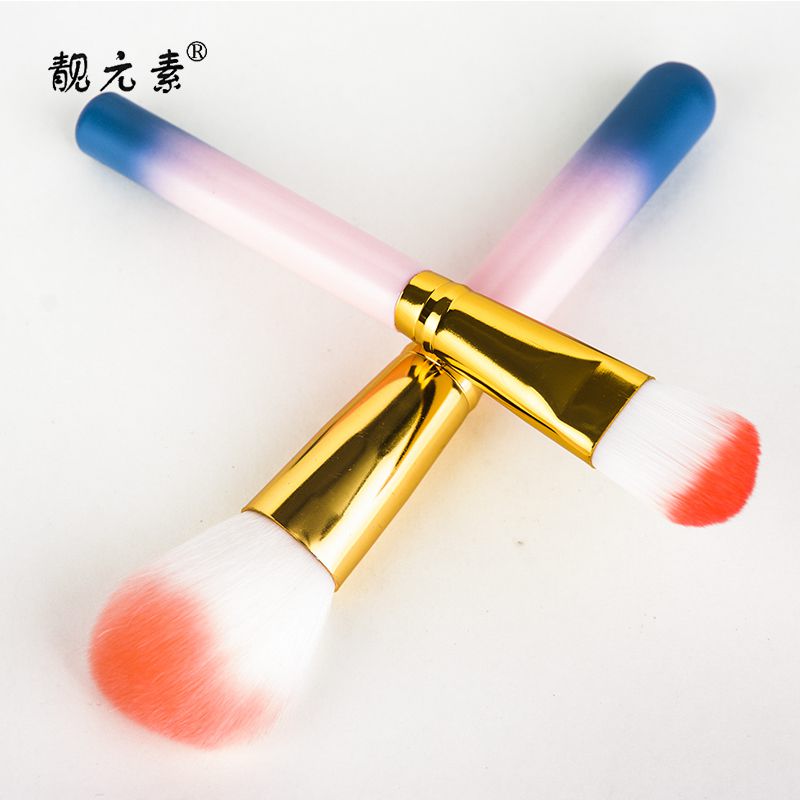Industry news
Nanofiber Bristle Production: Electrospinning Techniques for Ultra-Thin Fibers in Precision Brushes
- 678 Views
- 2025-11-26 01:30:49
Nanofiber Bristle Production: Electrospinning Techniques for Ultra-Thin Fibers in Precision Brushes
In industries ranging from cosmetics to medical devices, the demand for precision brushes with ultra-thin, high-performance bristles is surging. Traditional bristle production methods—such as injection molding or mechanical cutting—often struggle to achieve the nanoscale diameter, uniformity, and functional versatility required for advanced applications. Enter nanofiber bristle production, with electrospinning emerging as a leading technique to fabricate ultra-thin fibers tailored for precision brushes.
Electrospinning operates on a deceptively simple principle: a polymer solution or melt is charged under high voltage, creating an electrostatic field between a spinneret (nozzle) and a grounded collector. As the electric field overcomes the surface tension of the liquid, a charged jet is ejected, stretching and thinning as it travels toward the collector. This process, driven by electrostatic repulsion and solvent evaporation (or cooling for melts), results in continuous nanofibers with diameters typically ranging from 50 nm to 500 nm—orders of magnitude thinner than conventional bristles.

What sets electrospinning apart is its ability to fine-tune fiber properties through process parameters. Voltage, for instance, directly impacts jet stability: too low, and the jet may not form; too high, and it can fragment into droplets. Flow rate controls material deposition speed, while the distance between spinneret and collector influences fiber stretching—longer distances often yield thinner, more aligned fibers. Solution concentration is equally critical: dilute solutions produce thinner fibers but risk bead formation, while concentrated solutions may result in thicker, less uniform fibers. By optimizing these variables, manufacturers can produce nanofibers with precise diameters, porosity, and mechanical strength—key for precision brushes that demand consistent performance.
The advantages of electrospun nanofiber bristles are transformative. Their ultra-thin diameter enables superior flexibility, allowing brushes to conform to irregular surfaces (e.g., cosmetic brushes adapting to facial contours) without damaging delicate substrates. High specific surface area enhances product retention and release—ideal for makeup brushes, where uniform distribution of liquids or powders reduces waste and improves application smoothness. Additionally, the porous structure of nanofibers can be engineered for functionality: incorporating antimicrobial agents creates medical brushes that inhibit bacterial growth, while tuning surface wettability allows for targeted liquid absorption in industrial cleaning tools.
In cosmetics, electrospun nanofiber bristles are redefining luxury makeup brushes. Traditional synthetic bristles, often 10–50 μm thick, can leave streaks or uneven coverage. Nanofiber bristles, at 100–300 nm, mimic the softness of natural animal hair (e.g., squirrel or goat hair) but with better durability and cruelty-free sourcing. Brands report that these brushes deliver seamless blending of foundations and powders, with users noting reduced product consumption due to the fibers’ ability to hold and release product evenly.
Beyond beauty, medical device manufacturers are adopting electrospun nanofiber brushes for precision cleaning. In surgical settings, brushes must remove microscopic debris from instruments without scratching sensitive surfaces. Nanofiber bristles, with their nanoscale tips, can dislodge ps as small as 100 nm while maintaining gentleness—reducing the risk of cross-contamination and improving sterilization efficacy.
Despite its promise, electrospinning faces challenges in scaling for mass production. Conventional single-nozzle setups produce limited fiber yields, making large-scale manufacturing cost-prohibitive. However, innovations like multi-nozzle arrays and needleless electrospinning (using rotating drums or wires as spinnerets) are boosting throughput. Automated systems with real-time fiber diameter monitoring further enhance consistency, bringing nanofiber bristle production closer to industrial viability.
Looking ahead, the future of nanofiber bristle production lies in functionalization. By doping polymers with nanops (e.g., silver for antimicrobial properties) or integrating bioactive compounds, manufacturers can create “smart” bristles tailored to specific uses—from self-cleaning cosmetic brushes to drug-delivery brushes in wound care. As electrospinning technology matures, ultra-thin nanofiber bristles are poised to become the gold standard for precision brushes, blending performance, versatility, and innovation.











